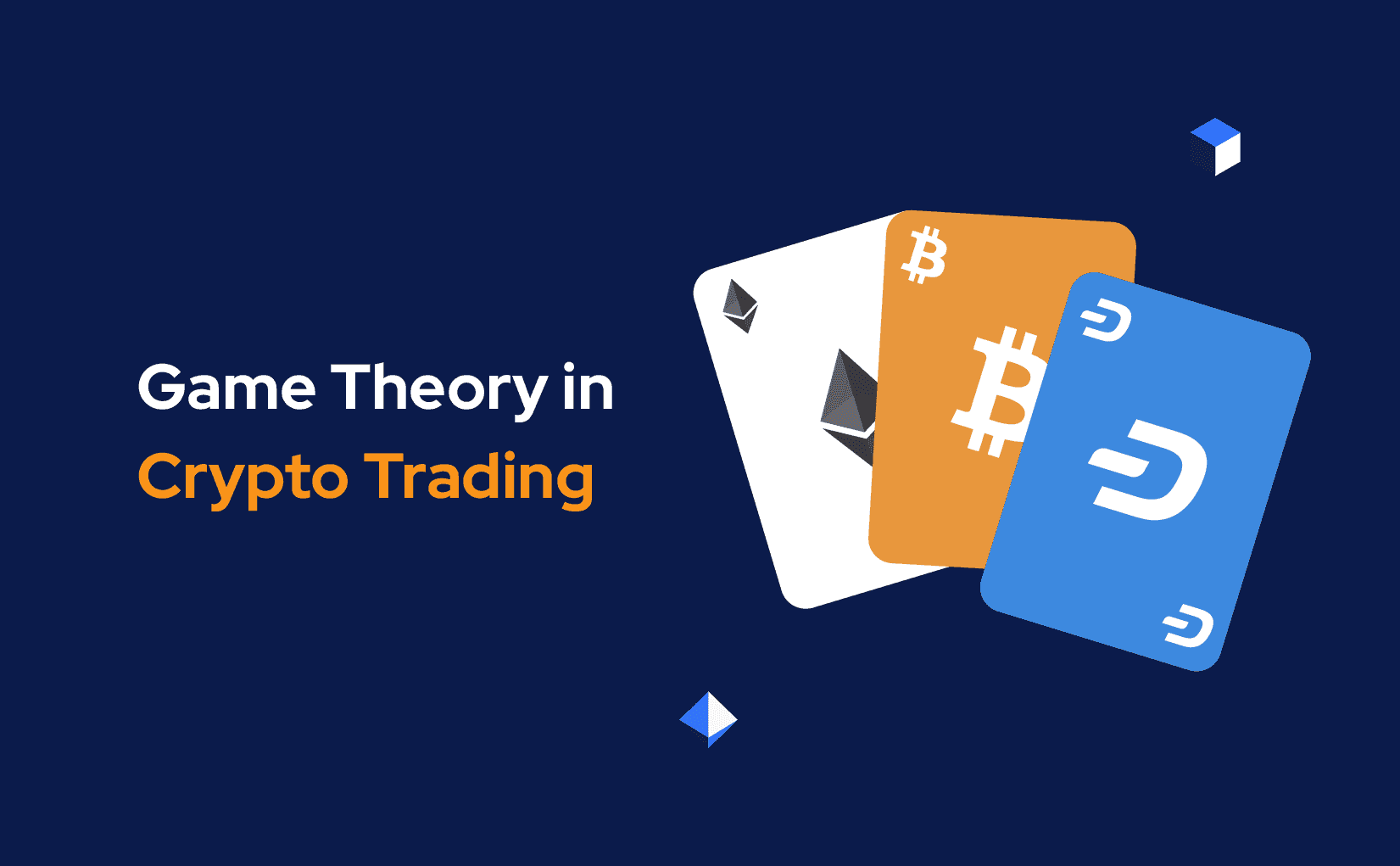Game Theory in Crypto Trading
Besides cryptography, the blockchain ecosystem relies on game theory. Game theory ensures users will perform validation honestly and won't fool the network, underlies fair and steady tokenomics, analyzes decision-making strategies within governance networks, and helps to choose the best possible option while trading and investing. What is game theory, how does the blockchain industry employ it, and how can it assist crypto users in evolving their trading and investing strategies?

What Is Game Theory
The game appears when there are two or more competing actors. The game theory is a mathematical method describing competing actors' behaviour and strategies and finding outcomes based on decisions for all participants. The theory suggests all actors make rational decisions, tend to maximize their outcomes and follow the game rules.
Game theory includes such elements:
- players: competing actors;
- strategy: the plan of players;
- playoff: the game result;
- information: details about possible outcomes and strategies at any point of the game;
- equilibrium: the point of the game where all players have made decisions, and the outcome is reached.
In the blockchain industry, miners compete to be the first to solve the computational problem and get mining rewards, stakers tend to get more rewards, DAO members lobby their interests, and buyers and sellers influence the crypto market prices to take advantage of price swings. The crypto market is a game with multiple types of actors and strategies they may stick to.
Types of Game
Games may differ depending on strategies, outcomes and information.
Perfect and imperfect information games
Perfect information games require all players to know the previous in-game actions of all players, as well as the strategies and payoffs available to them. Imperfect information games mean some details are hidden from the rest of the players.
In the crypto market, users can see transaction history to know the previous actions of other "players" and how many Bitcoins or other cryptocurrencies crypto users generally hold. But trading and investing appear complicated; thus, the possible strategies are not obvious to other players and are not limited by just several options, making the crypto market an imperfect information game.
Cooperative and non-cooperative games
A cooperative game appears when players unite their strategies to win the game. Thus, some miners join mining pools to consolidate their powers to get mining rewards, as individual mining has become unprofitable. In mining, the result is clear and accessible for everyone, making cooperation possible.
In non-cooperative games, individual players compete to achieve their own goals. Trading itself is a non-cooperative game.
Zero-sum and non-zero-sum games
Zero-sum games suppose there are winners and losers and the collective net benefit equals the collective net loss. In zero-sum games, players strive for the same outcome. In non-zero-sum games, all players can win or lose simultaneously.
Trading and investing can be both zero-sum and non-zero-sum games. While there is a fight between buyers and sellers, the outcome may differ. Sometimes, there are losers and winners when prices have changed, but sometimes, players may have compatible strategies so all can win.
Game Theory Strategies
Crypto users may consider several strategies depending on the context, goals, available options and market state.
Maximax strategy
It is an all-in or all-out game, where players aim to get the biggest possible result, thus simultaneously bearing the most risks. Participants are willing to get the best result even if the worst outcome is possible. Such a strategy appears when users fund Initial Coin Offerings of new projects when the result is unpredictable, and the potential loss is all the money.
Maximin strategy
Players choose the best of the worst playoff, sacrificing their benefits to avoid the worst result. The strategy appears when an optimistic scenario is almost impossible, so players hedge their risks. Traders can use a stop loss order to set a minimum sell price and limit losses when the market falls.
Dominant strategy
Players aim to gain the best outcome irrespective of what other participants decide to do. A whale can choose to sell cryptocurrencies during an uptrend and gain the most possible profits while it will cause the crash of the whole market.
Game Theory in Crypto Trading
Since trading has two possible playoffs, winning or losing, the game theory suggests trading is a 50/50 chance game. Thus, the entry time and signals are less important than the exit because the trader may win by picking a perfect exit time. The more trader plays the game, the more the odds are to succeed.
In trading, it is necessary to focus on win-lose characteristics and determine risk and reward in each trade. To increase the chance to win by 50%, you should split your capital into small portions to trade more times. Thus, you can trade 0.5-1% of your money in each trade. For each game, you bet, let's say, $5 to get $10 in return. In this case, in each iteration, you can lose 5 $ or get $10; with a 50/50 chance game, you never lose money.
A series of wins changes by a series of losses, so you should consider the possibility of winning in the next game, given the previous games' results. This approach helps control emotions and stay rational by analyzing outcomes.
In Conclusion
Game theory is a useful mathematical instrument to predict market changes, the behaviour of other traders and investors and stay cool-headed when things go against your plan.
Follow SpectroCoin on social media for more useful ideas to boost your crypto trading and investing.